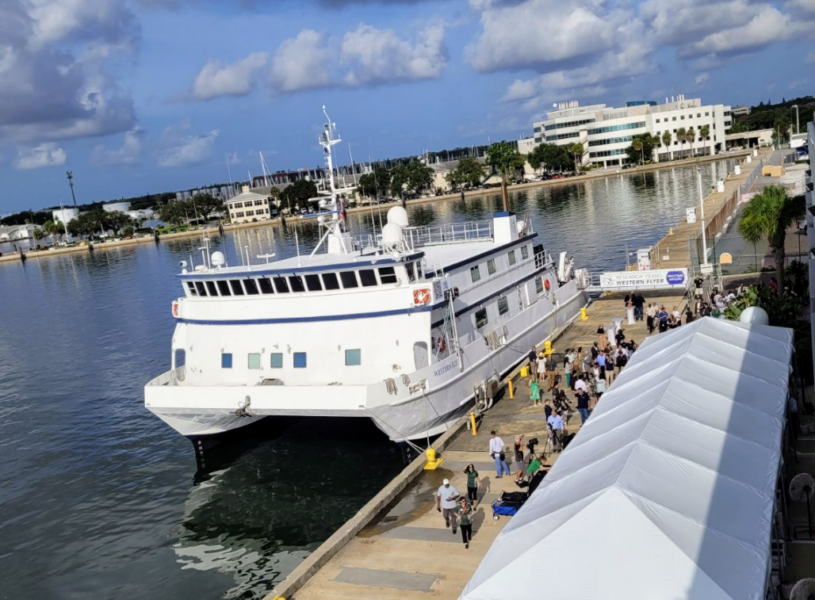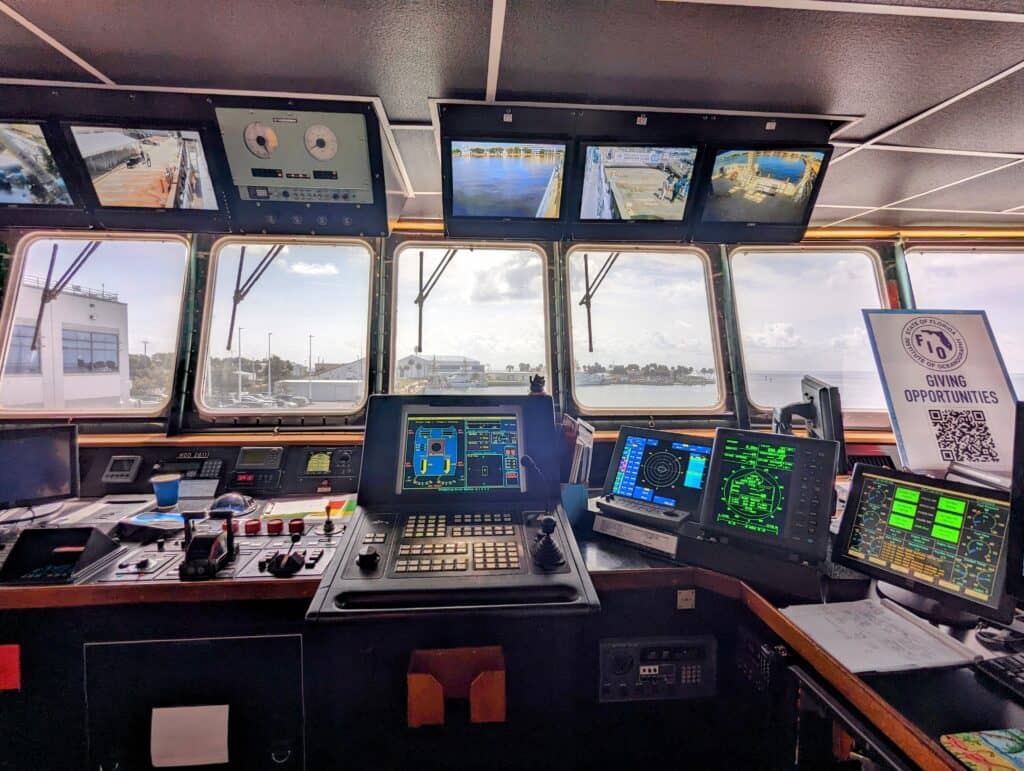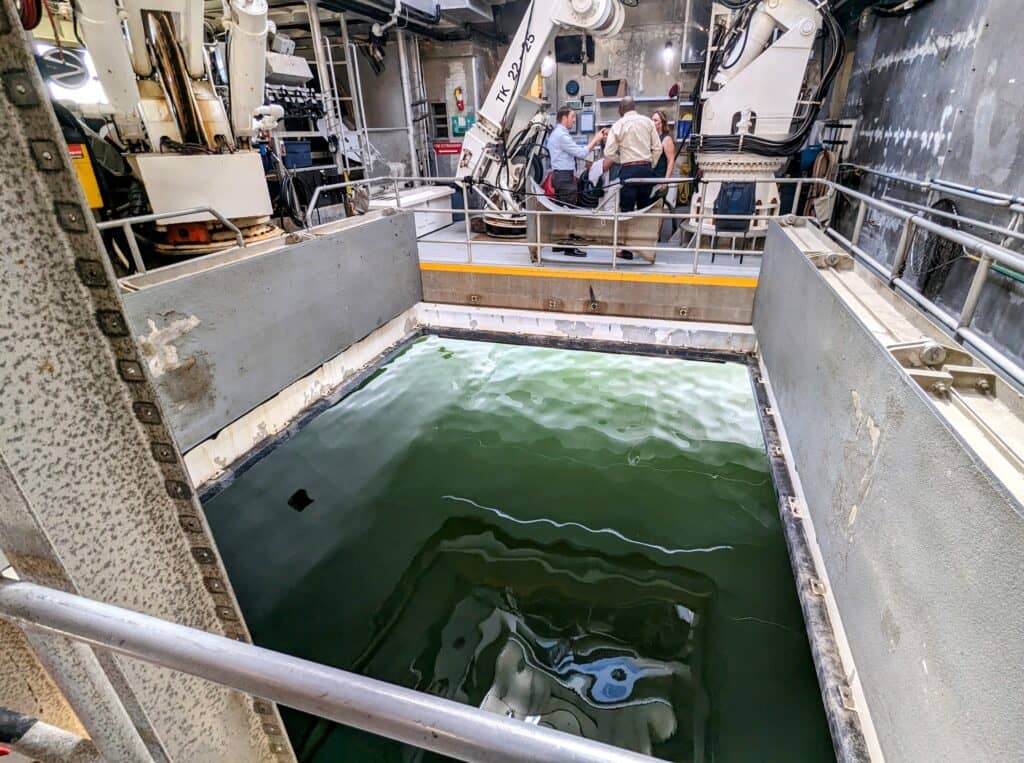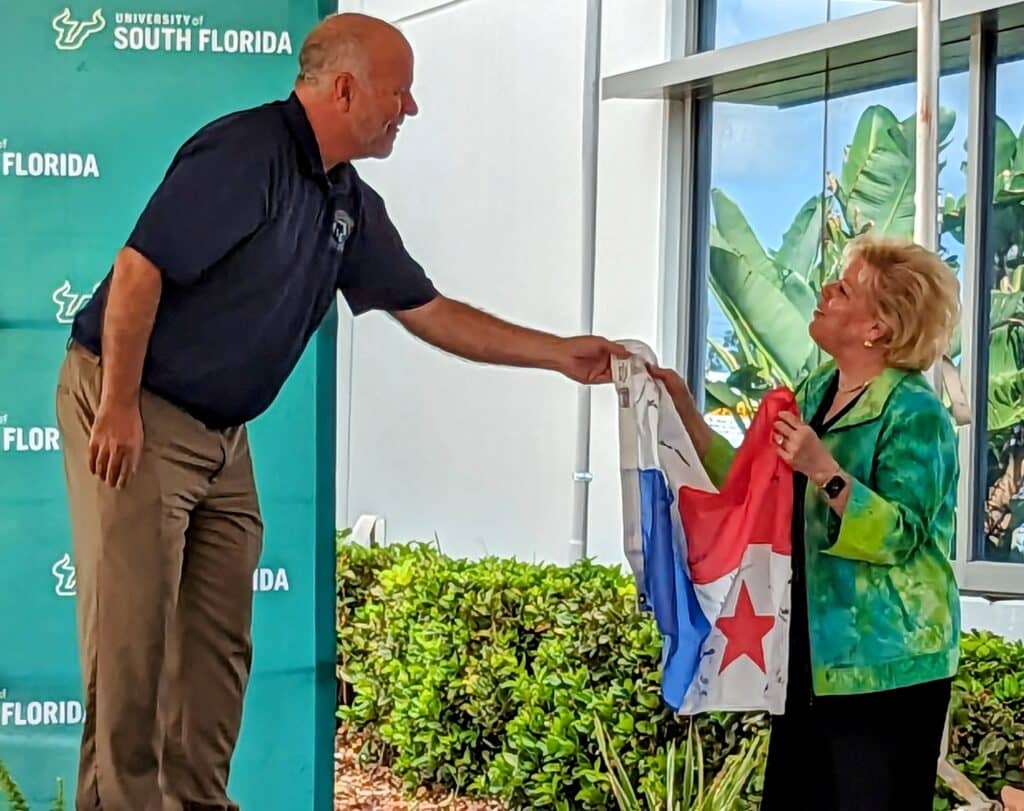Know
St. Pete becomes a mecca for marine science

Dozens of local government, academic and scientific leaders gathered along Bayboro Harbor Wednesday morning to celebrate the intersection of research, inclusivity and economic impact.
Over 100 attendees at the Maritime and Defense Technology Hub heard how a state-of-the-art research vessel would further cement the city’s place as a global destination for marine science. The renowned Monterey Bay Aquarium Research Institute donated the Western Flyer to the Florida Institute of Oceanography (FIO) and the University of South Florida in November 2022.
In addition to unveiling the $11.7 million, 117-foot Western Flyer, USF’s leadership announced a new program to increase the “ocean STEAM (science, technology, engineering, art and math) workforce. Superlatives dominated the day.
“We are the global destination for marine science,” said USFSP Regional Chancellor Christian Hardigree. “We are.”

The Western Flyer is the most technologically advanced ship in the Florida Institute of Oceanography’s fleet. Photo by Mark Parker.
Florida is a leader in the nation’s blue economy, boasting over 520,000 jobs and a $34 billion annual financial impact. Helping lead those efforts is the FIO, housed on the St. Petersburg campus.
The organization is a 32-member consortium that includes agencies like the Mote Marine Laboratory and the Smithsonian Marine Station. While it also operates a Keys Marine Laboratory, St. Pete is “home.”
After executive director Monty Graham acknowledged the myriad of local, state and national officials who helped see the project to fruition, he explained the ship’s importance. The Western Flyer’s size and twin hulls provide more stability than FIO’s other research vessels, an important factor when recruiting people unfamiliar with life at sea.
It offers a full-service galley, sleeping quarters for 16 researchers and 10 crew members, a recreational space and wet and dry labs. Most importantly, Graham noted it boasts a moon pool – a wide opening in the hull to deploy its remotely operated vehicle (ROV).
The submersible can explore depths up to 4,000 meters – or 2.5 miles below the surface. Tom Drake, head of the Office of Naval Research’s Ocean Battlespace Sensing Department, told attendees his agency provided $1.5 million to build the Western Flyer‘s ROV.
“Imagine a vehicle that can go more than two miles down into the ocean,” Drake said. “And do things that humans can’t do.”

The ship’s “moon pool” allows researchers to deploy a remotely operated vehicle. Photo by Mark Parker.
Drake said the Navy believes in the FIO’s vision and ability to expand the ship’s “history of excellence.” That is no small feat, as Graham said it has helped map the Monterey Canyon’s seafloor and identified over 200 new species through 500 research missions.
He said the project began two years ago with the idea to dedicate a vessel for increasing inclusive marine workforce opportunities across multiple disciplines. Graham credited USF President Rhea Law for championing the initiative.
Law said it was “pretty easy to say yes” as Graham created detailed plans and garnered local, national and international support for the initiative.
She also noted that USF “has been on a roll.” In June, the institution received an invitation to join the prestigious Association of American Universities (AAU) and a $24 million allocation to start construction on a long-awaited interdisciplinary science research and teaching facility.
“I mean, really, this is a summer to remember,” Law said. “This will make St. Petersburg a global destination for marine and environmental science education and community engagement. We have so much more to do, and we’re going to get there.”
Officials also announced the new Peerside program, made possible through a five-year, $14.5 million grant from the Office of Naval Research and the Schmidt Family Foundation. Drake said increasing the ocean STEAM workforce would help ensure the nation’s future success.
Peerside will transform the Western Flyer into a “floating classroom” that allows postgraduate students to explore marine careers and discoveries. Officials will recruit novices from historically Black colleges and universities, tribal communities and trade schools to increase diversity.

FIO Director Monty Graham (left), hands USF President Rhea Law a Panamanian flag signed by its crew. The ship had to fly the flag to sail through the Panama Canal on its way to St. Petersburg from Monterey Bay, California. Photo by Mark Parker.
The interdisciplinary program will encompass multiple majors and combine traditional marine science with archaeology, engineering, communications and other focus areas. “To the University of South Florida – wow,” Drake said.
“There’s so much going on here in St. Petersburg. We all share the same challenges of building a modern, capable and well-represented workforce, and the Navy and Office of Naval Research are proud to be a big part of this.”
Hardigree said Peerside would fill gaps in the marine talent pipeline. An accompanying flier stated that minorities comprise 42% of the nation’s population, yet only 25% are marine scientists.
She noted that the pilot program’s cohort recently embarked on their first excursion and will take their second trip aboard the Western Flyer Thursday. Mayor Ken Welch said the research vessel would foster equitable education and called it another step towards becoming a “world-class city.”
“We can’t afford to lose one mind in our state,” Welch added. “Let’s embrace this moment as a catalyst for progress, for collaboration and for discovery.”


Robert Ross
July 13, 2023at8:26 pm
You might want to look at Eckerd College’s acclaimed marine biology programs. They’ve done some impressive work as well.
Kris Self
July 13, 2023at12:41 pm
I sure do hope that they are going to upgrade the infrastructure. That port is an embarrassment. Many of the crew here for the Tall Ships event complained about the port.
Hazeltine Hugh
July 12, 2023at11:57 pm
I watched this vessel move from the city port docks to the USFSt.Pete docks today. Can you outline what her next voyage to sea will entail? Who is the ship’s Captain? Will this diminish the roll of another FOI ship called “Weather Bird”?
Darren Ginn
July 12, 2023at5:15 pm
All the more reason to leave Albert Whitted airport off the table for redevelopment. Upgrade the airport and surrounding docking areas to enhance marine activities.